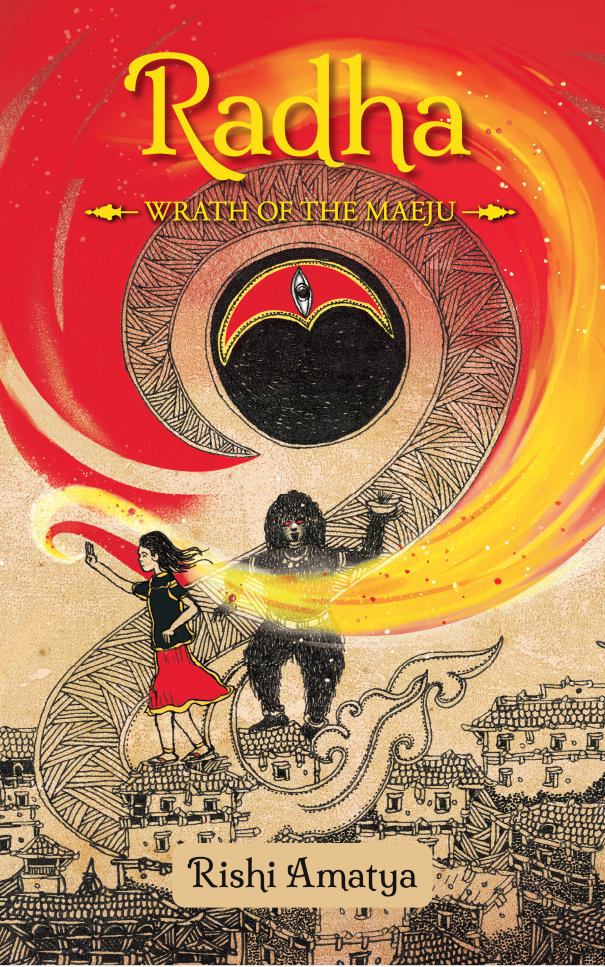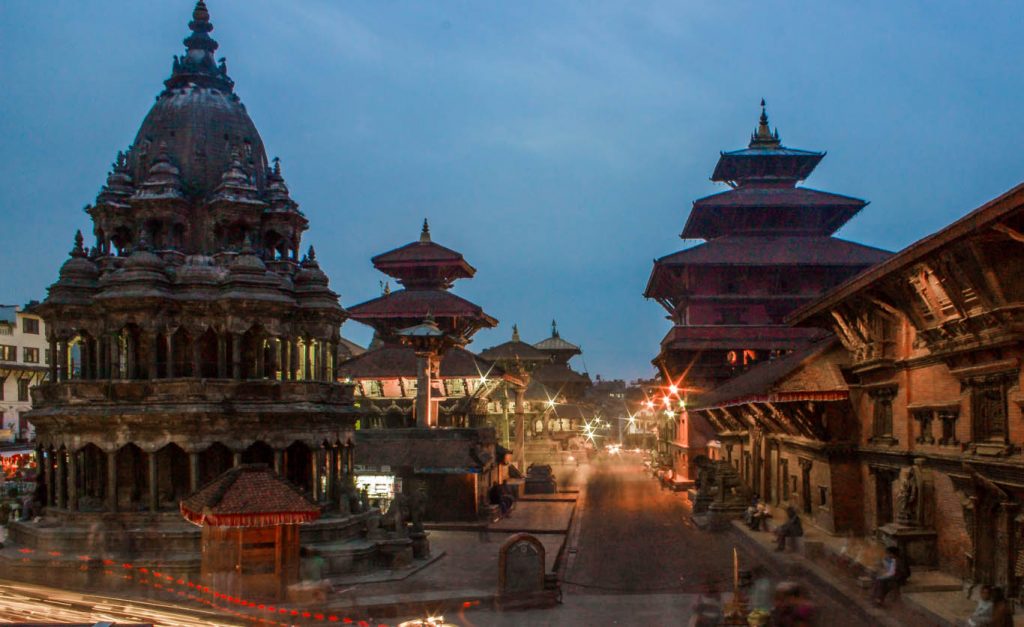
After the launch of his debut novel, Radha: Wrath of the Maeju, on December 9, Rishi Amatya’s daily schedule has undergone a slight change. Unlike before, he now has to dedicate time to attending media interviews and events related to the book.
In a country boasting hundreds of writers, only a select few have left their mark on the English literary landscape. Rishi Amatya has emerged as one of these authors, distinguishing himself by releasing an English fiction novel in Nepal.
While many fiction books often unfold in imaginary settings or Western locales, Amatya’s debut novel stands out as it is set in Patan and takes readers on a unique journey through places such as Mul Chowk, Sundari Chowk, and others.
Given that the book is centred around Patan and the Kathmandu Valley, Rishi Amatya is optimistic about its potential to draw foreigners to explore Patan. This parallels his own yearning to journey through foreign lands after being inspired by fiction from the West.
“I feel the book will raise curiosity among foreigners about Patan and its architecture and history,” says Amayta, a native of Mangalbazar, a place in Patan.
An author’s journey
Despite, Radha: Wrath of the Maeju, being Rishi Amatya’s debut novel, he has been writing for a long time. His writing journey includes contributions to school journals and newspapers, along with experience as a freelancer for various publications.
It was not until 2017 that he thought about writing a book. It coincided with his involvement in the Kathmandu Triennale, an art festival centred around the theme Our City, which sought educational ideas for children.
Concurrently, while pursuing a master’s degree in heritage management at the University of Birmingham, he had the chance to travel to several castles in Wales. The diverse activities he observed, capable of capturing children’s interest in heritage, fascinated him and served as the catalyst for his venture into book writing.
For the Kathmandu Triennale, Amatya came up with the idea of creating a story-based map to make Patan intriguing and engaging for locals, particularly children. The concept for the eight-page map involved three main characters, including an uncle, with whom two children embark on a journey to Patan, learning about the place along the way.
“I chose an uncle as a protagonist as I travelled around Patan a lot with my uncle who told me a lot of stories about the city,” says Amatya.
In this map, the three characters journey to Mul Chowk, Sundari Chowk, and Bhandarkhal Chowk, with the two children delving into the art, architecture, and history of these locations. A notable section of the map focused on reconstruction, offering insights into the impact of earthquakes and stressing the significance of reconstruction for heritage sites.
Later, driven by his passion for travel literature and armed with a master’s degree in heritage management, Rishi Amatya aspired to expand the concept introduced in the map showcased at the Kathmandu Triennale. This desire to delve deeper into the idea ultimately led him to the decision to write a book.
In 2017, Amatya penned the first draft of his book, followed by a second draft in 2018. Subsequently, in 2020, he underwent a significant rewriting process after being awarded a writing fellowship by Quixote’s Cove.
“After the fellowship was announced during the Covid lockdown, I reached out to them and told them I already had a manuscript and asked them to go through it,” he says.
Having gone through it, he came back to Amatya telling how much they loved his work.
A book for all

Now with Radha: Wrath of the Maeju released, it has been enjoyed by everyone including the patan locals. Amatya says those who have bought the book have been provided constructive feedback which has provided him with added motivation.
“Locals of Patan have said that it was their first time reading such stories about the place where they were born and raised,” says Amatya. “The narratives, centred around familiar aspects of their lives, have sparked excitement and curiosity among the residents.”
With the book having small details about the core city, readers have been finding added nuances about Patan that they had not noticed before.
“I’ve been told how inserting this fictional fantasy story set in Patan is,” says Amatya.
Encouraged by readers, Rishi Amatya is considering delving into other facets of Patan culturally and historically in the future. Some readers have expressed interest in exploring not only Patan but also Kathmandu and Bhaktapur.
In response to these suggestions, Amatya has professed his commitment to expanding his exploration beyond Kathmandu. He has already commenced research on Kathmandu and Bhaktapur, signalling his intention to broaden the scope of his literary exploration.
The choice of the protagonist’s name, Radha, holds a sentimental significance for Amatya. It serves as a tribute to a friend of both Amatya and his wife, Radha, who died of cancer.
“It’s our way of remembering her,” he says.
Rishi Amatya underlines that writing a book is a collaborative effort and extends beyond the act of typing. It involves extensive research and reference materials. For his eight-chapter book, he relied on academic research, papers, and articles on culture. Additionally, he conducted interviews with relevant individuals. One notable example is his conversation with Abhas Dharananda Rajopadhyaya, which focuses on traditional aspects.
Rediscovering Patan

As a native of Mangalbazar, Rishi Amatya says that the place is his identity. He feels like he can walk around the place blindfolded. He always wondered why no one wrote about the city and the heritage surrounding it.
After years of waiting, Amatya took the initiative to write about the place himself. During the writing process, he made repeated visits to certain locations to verify directions and dates. Being a local of Patan, he had the advantage of promptly visiting the necessary places, contributing to the authenticity of his narrative. Many parts of the book were crafted within the walls of the Patan Museum.
“It is a book about Patan, written from Patan,” says Amatya.
Amatya now wants to translate Radha: Wrath of the Maeju into Nepali and Nepal Bhasa. He believes that the book would have a unique and captivating appeal in Nepal Bhasa, particularly because it contains numerous elements that people from the Newa community can deeply relate to.
Before writing the book, Patan was just an ordinary place for Rishi Amatya. However, as he delved into the research, his perspectives about the place evolved. Initially perceiving it as having a common history, he came to realize that the history of Patan was constructed gradually and over time, revealing a more nuanced and intricate narrative.
“Writing Radha allowed me to rediscover Mangalbazar and Patan as a whole.”



















